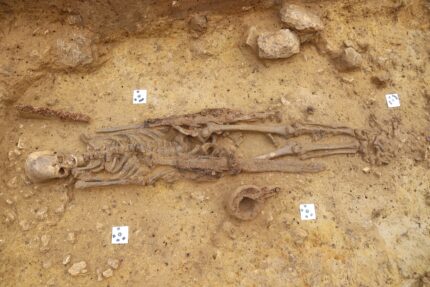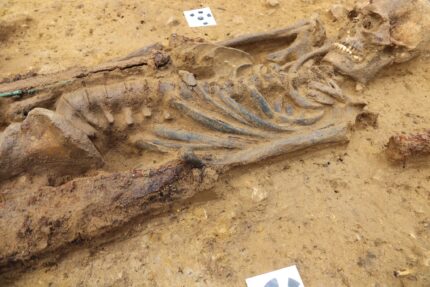
The grave contained the skeletal remains of a man between 30 and 40 years old at the time of death. The position of the shoulders — close together and slightly raised — is known as coffin posture, evidence that the man was buried in a wooden casket of which no traces survive today. He was buried with a full complement of weapons. A spatha (double-edged sword) with a blade 30 inches long (the whole sword including hilt and pommel is 37 inches long) was placed under the deceased’s right arm. The blade is in excellent condition and even retains some of its original flexibility. Elements of a bronze scabbard and the suspension mount or belt also remain in place.

The flat shield boss with a wide rim and the massive design of the seax suggest the burial dates to the 7th century identifying the warrior as Frankish. That preliminary assessment may change once the weapons are cleaned and conserved. There are details of the ornamentation, including what appear to be silver inlays, that are currently obscured by a heavy coating of corrosion materials.
Excavations of the burial ground began in 2015 and come to an end this year. Most of the graves were pillaged centuries ago, so this rich discovery is of great archaeological import. Study of the weapons and analyses of the osteological remains promise to shed new light on Merovingian-era society in Ingelheim.
* This article was originally published here








No comments:
Post a Comment